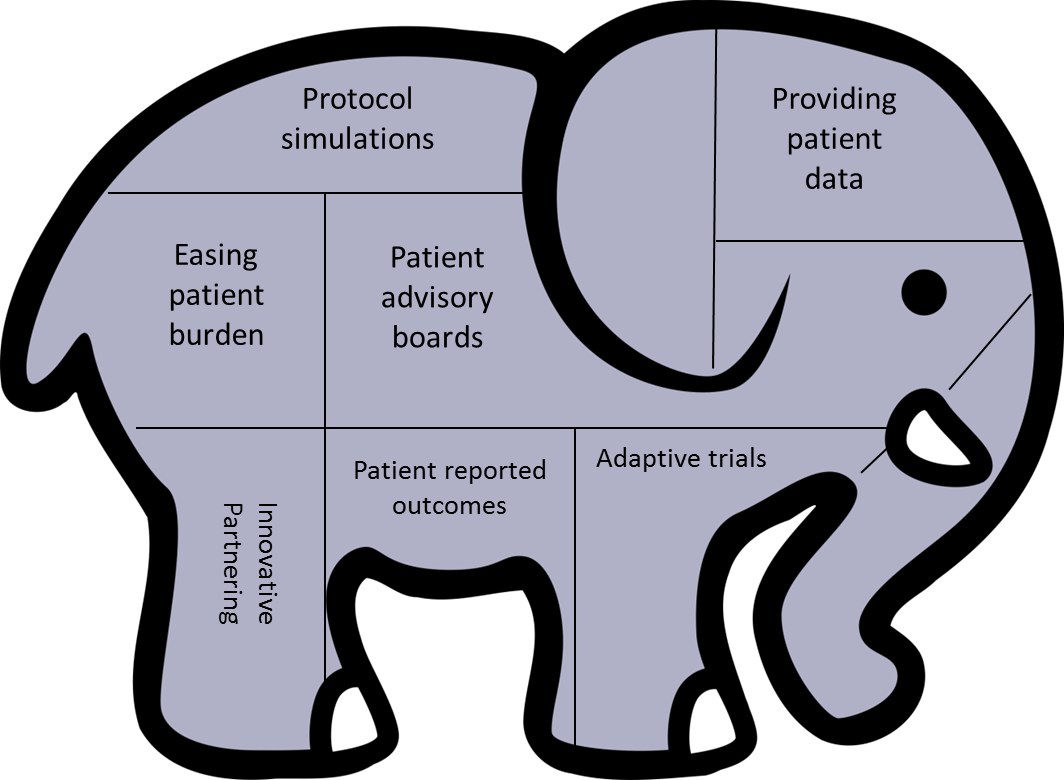Blog Post
Practical Strategies to Simplify Patient Centricity: Part 2—Patient Stories & the Importance of Communication
May 30, 2017
 Shann Williams has over 10 years of experience managing clinical trials. She is the Director of Operations of the Statistical and Clinical Coordinating Center for the division-wide Consolidated Coordinating Center sponsored by the National Institute of Allergy and Infectious Disease (NIAID). In addition, Shann serves as Rho’s Project Management Operational Service Leader, an internal expert sharing project management best practices, processes and training.
Shann Williams has over 10 years of experience managing clinical trials. She is the Director of Operations of the Statistical and Clinical Coordinating Center for the division-wide Consolidated Coordinating Center sponsored by the National Institute of Allergy and Infectious Disease (NIAID). In addition, Shann serves as Rho’s Project Management Operational Service Leader, an internal expert sharing project management best practices, processes and training.
This is the second in a series of blog posts on putting patient-centric principles into practice. Click here to view the first post.
Excellent retention practices, such as those shared in the first article in this series, are a great first step but before we implement them and call it a day, we need to ask ourselves, why are we doing this? To keep patients in our study for longer and thereby help ensure study success? Or to put patients’ needs first and thereby help to ensure study success? The difference described may be subtle and but I believe it’s one that can makes all the difference to the patients. Our motivations do tend to guide our actions and communications.
In this post, I’ll share two patient stories that changed the way I thought about my motivation for the work we do in our industry. For me, these highlight the importance of putting patients first in our communications as a first step to putting them first in our clinical trials.
Patient 1
The first patient I describe in my story is me. My personal struggle with my 2004 diagnosis of lupus and rheumatoid arthritis was compounded by the confusion about what having an autoimmune disease cocktail meant for my body. Not only was every single joint in my body swollen and painful to the extent that I could not dress myself in the morning without tears, but my rheumatologist was unable to control my symptoms. The only thing that kept the inflammation down in my joints was a prednisone dosage too high to maintain safely in the long-term.
Throughout this difficult time when I was learning about autoimmune diseases, my future quality of life, and what it meant to lose the ability to run – something I had always enjoyed – the thing I most appreciated about the health care I received were those providers who listened, who did not rush through to their next appointment, and who offered materials so that I could better understand what was happening to my body: the diagnosis, treatments, and long-term options.
One particular afternoon after a series of frustrating failed call-backs from my doctor and scheduling roadblocks that I continued to run into in order to get a follow-up appointment, I was finally able to speak with a human physician over the phone about additional treatment options. During our brief call, a clinical trial was mentioned. The study was explained hurriedly and almost in an exasperated tone. It was a trial to see whether a product used typically as chemotherapy treatment would work for the severe symptoms I was experiencing in people with my disease. Unfortunately I never found out if this treatment could have helped me because I flat refused it solely due to the poor communication used when it was described to me. Certainly the company or Government sponsor funding that study would have been horrified to hear how their study was introduced. Perhaps that care giver was having a bad day. I’ve often thought that I was only one of many millions and surely my experience was an unfortunate one-off.
Sadly, however, I don’t believe my story is all that dissimilar from others. As a matter of fact there is a reason why the Center for Information and Study on Clinical Research Participation (CISCRP) and ICON partnered last year and held the “Inspiring Hope Ideathon” to solicit greater awareness of and participation in research studies—because it’s severely lacking.
As a matter of fact, according to this study on clinical trial enrollment demand, it would take 1 in 6 people to enroll in a clinical trial to meet enrollment goals for the current studies listed on clinicaltrials.gov. Why is this the case?
It would be foolish to assume the challenge lies with communication alone and in the way patients are approached to participate in research. But, like the old adage says, “how do you eat an elephant?” It could be a small “bite” in the right direction.

Patient 2
Thankfully the story of patient 2 is in stark contrast to my story. I was waiting with my husband last fall getting ready to get called back for pre-op to have my thyroid removed. We were sitting next to a family in a crowded surgical suite waiting area with their nine-month-old baby girl also waiting for her buzzer to be paged. Her scheduled surgery was to remove a very rare kidney growth.
A Study Coordinator sat with them and explained a research study to the mother, father, and grandparents and discussed the potential enrollment of their baby.
The parents were paged and they and the study coordinator went back to pre-op. Apparently they had signed the consent form because the study coordinator came back to chat with the grandparents. The thing that struck me was that the study coordinator came back. She sat with them just to see how they were, asked if they needed anything and got them some water, and answered questions about their granddaughter’s disease. The grandparents asked her a slew of questions ranging from “what if it’s cancer?” to specific questions about some of the long-term potential outcomes. The coordinator carefully navigated the questions and often said, “I’m not a doctor but…” and then relayed to them her personal experiences with infant renal dysfunction based on the study. She spent 20 minutes with them and afterwards as she handed them her card and offered to answer any additional questions they had, and to put them in touch directly with the physician overseeing the study. As she stood to leave, the grandmother said that she was the first person to care enough to answer their questions and explain what was going on with their granddaughter in months. The grandmother began to cry and reached to hug the study coordinator.
Isn’t this why we’re in this industry in the first place? To help people live healthier, longer lives and increase their quality of life? Isn’t “bedside manner” and general caring the bare minimum in easing patient burden? What if all clinical sites vetted and hired competent and caring communicators? What if we offered specific trainings on how to better approach patients as a requirement for any potential clinical trial recruiter?
Or perhaps a simple change in our motivations and approach could move clinical research participation forward and make the experience better for patients overall.
